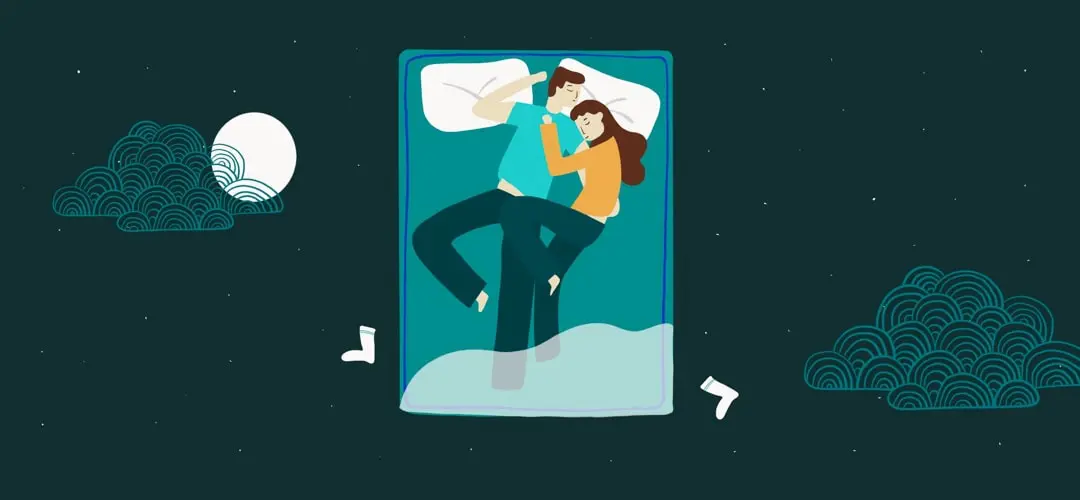How to Sleep on Your Back: 7 Tips
Share
Fact checked
Reviewed by experts
Updated
December 27, 2022
Quick read
5 mins to read
List of Content
Did you know there are certain health conditions like neck pain, back pain, and acid reflux that can worsen if you sleep on your side or on your belly? This is where knowing how to sleep on your back can really help. Changing positions is not as easy as it sounds and may take some practice and getting used to.
According to studies sleeping on your back, also known as the supine position, has many health benefits. Back sleeping is the second most preferred sleep posture after side sleeping. Read on to know why and how to sleep comfortably on your back, what happens when you sleep on your back, when should you not sleep on your back, and how to become a back sleeper to get better sleep.
7 Best Tips for Sleeping on Your Back
1. Choose the Right Mattress to Sleep
If you are clueless about how to sleep on your back, then this is the first and foremost step to start with. Make sure your mattress allows proper spinal alignment and offers good support and contouring for your body.
Using a mattress that is too firm may prevent your hips from sinking properly, while a mattress that is too soft will sink your hips too far. Gaps between your body and mattresses are the common reason why people wake up with pain, soreness, or restlessness in the morning.
2. Find the Right Support for Your Head and Neck
This is another important factor to keep in mind if you’re learning how to sleep on your back. If your pillow height is too low or high, it will disturb the normal cervical curvature. For proper support and head elevation, go for a memory foam or wedge pillow or simply roll up a towel. This practice is effective for morning headaches.
3. Keep a Pillow Under Your Lower Back or Knees
How to sleep on your back if you are unable to change your uncomfortable mattress? Try using pillows under the knees and lower back. This will eliminate gaps between your body and mattress and ensure your neck and spine are in proper alignment. To be more comfortable you can slightly bend your knees. This trick relieves pain on your spine and pressure off your hips and shoulders. You will feel a lesser need to roll over as your weight is evenly distributed. Try this and you will not feel stiff after waking up in the morning.
4. Spread Your Arms and Legs
This is how to sleep on your back if you want to avoid excess pressure on your joints. Lie on our back and spread our arms and legs like a starfish. That’s an excellent strategy for even weight distribution.
5. Stretch Before Bed
Those learning how to sleep on your back without missing comfort, add stretching to your bedtime routine. It improves blood circulation and relaxes your body. Stretching your back, neck, and legs for about 20 minutes before bed will help you fall asleep without much struggle. Simple exercises and yoga poses can do wonders. You will feel very comfortable and relaxed when sleeping on your back.
6. Relax With Breathing Techniques
How to sleep on your back when stretching is not helping you fall asleep? Then you must focus on both mind and body relaxation. Try Three-Part Breath (Dirga Pranayama) and 4-7-8 breathing for anxiety.
7. Build a Pillow Fortress to Sleep Within Your Boundaries
Are you used to sleeping in some other position? Are you newly learning how to sleep on your back upon strict recommendation from your doctor? Are you wondering how to sleep on your back all night? The last but not the least best way to sleep on your back is building a pillow fortress. This prevents your body from rolling over or switching to other sleep positions. Also, you will feel more secure.
Benefits of Sleeping on Your Back
Below are the common benefits of sleeping on your back.
Improves Spine Health and Relieves Neck or Back Pain
Lying on the back keeps the neck, head, and spine in a neutral position and the bodyweight is evenly distributed. This is a relaxing body posture because there is no pressure on the neck, shoulder, belly, and joints. So, no compression or twisting that causes neck or lower back pain. Therefore, back sleepers wake up with no pain in the hips, knees, neck, back, or any other body part. They also experience less discomfort due to pain from old injuries or other chronic conditions.
Relieves Stuffy Nose
Sleeping face-up keeps your head above your heart, which prevents excess blood flow to your nose and mucus build-up. This sleeping posture relieves sinus pain and nasal congestion. It is the healthiest sleeping position for those who are sick.
Reduces Headaches
Poor neck alignment causes headaches, so sleeping on your back alleviates this problem. Unless the pillow for back sleepers pushes their head too forward, which disturbs the alignment of their spine. Choose the correct pillow height to avoid such discomfort.
Prevents Wrinkles
When you are sleeping on your belly or sideways, your face is pressed against the pillow. There is a high chance of friction between your facial skin and the pillow. Such stretching and compression can lead to facial wrinkles and fine lines. Sleeping on your back can possibly prevent wrinkles, according to studies.
Less Puffy Eyes
Fluid build-up during sleep causes puffy eyes, which is a common side effect of sleeping on your stomach or sideways. Back sleeping with a slightly elevated head prevents fluid retention and puffy eyes.
Reduces Acid Reflux
Sleeping on your back with the head elevated enough to keep the esophagus above the stomach, prevents acid reflux and heartburns.
How to Train Yourself to Sleep on Your Back
If you are worried about how to sleep on your back when you have never done that before, remember you cannot master this new sleep posture overnight. New habits take time. Persistence is the key! You need to try the above-mentioned tips and work hard. Within a few days, you will feel comfortable sleeping face-up. That said, don’t compromise on your comfort and quality of sleep.
How to become a back sleeper, if your doctor says it is necessary for your spine health? Below are some more tips:
- Lie flat on your bed and place your arms in a goal post position.
- You can keep your arms straight on either side of you if that makes you feel comfortable.
- Choose a pillow that doesn’t tilt your chin to your chest.
- Elevate your upper body slightly to make yourself more comfortable.
- Use a flatter pillow under your head
- Place a round pillow under your neck
- Reward yourself for sleeping on your back every day
- Maintain good sleep hygiene
When You Should Not Sleep on Your Back
During pregnancy, you should not sleep on your back, because it will decrease the blood flow to the baby.
People with obstructive sleep apnea can worsen the condition by sleeping on their back, which blocks the airway causing disordered breathing.
Sometimes sleeping on your back causes heartburn especially if you are sleeping without a pillow. You can manage this problem by keeping your upper body slightly elevated. Avoid eating spicy, acidic, or fatty food before bed; it will prevent heartburn symptoms.
What Is the Best Sleeping Position?
There is no one best sleeping position for all. Your sleep needs and comfort level determines what is the best way to sleep for you. Whatever your sleeping position, if you are enjoying a good quality of sleep and waking up every morning without any health complaints, then it is best for you.
Below are the best sleeping positions for people with a specific health condition:
- If you are pregnant – lying on your side with the knees bent is the proper way to sleep.
- If you are experiencing a stuffy nose, lumbar spinal pain, back pain, or neck pain – learn to sleep on your back, it will give you great relief.
- If you have a snoring problem- sleeping on your side with a pillow to change the head position is best for you. Avoid back sleep because it will collapse your tongue to the back wall of your throat and block your airway.
- Those with sleep apnea should always sleep on the side to improve this condition.
- For those with GERD or acid reflux, sleeping on the back is the best sleeping position.
For mild discomfort, instead of thinking only about how to sleep on your back, you may consider the following factors –
- Is your mattress good for a bad back?
- Does your pillow provide healthy spinal alignment?
- Do you have a conducive sleep environment?
Sleep position affects sleep quality and health and well-being. Everyone has different sleep positions. Back sleeping can be beneficial for great spine health and relieving neck and back pain. But, not recommended during pregnancy and for people with apnea. Learning how to sleep on your back is not hard at all. A supportive mattress and pillow can help you become a back sleeper.
This website does not offer medical advice nor professional medical services; rather, it is provided solely for educational, informational, and/or entertainment purposes. Individuals seeking medical advice should consult a licensed physician. The information provided should not be used for diagnosis or treatment of any condition, disease, or injury. When you have a medical condition, you should always talk to licensed doctor or other certified medical professional. You should never delay seeking professional medical advice or treatment based on the contents of this website. Call 911 or immediately go to the nearest emergency room if you think you may have a medical emergency. The contents of this website are provided “as-is”, Sleep Authority and its parent, subsidiaries, affiliates, employees, contributors disclaim any warranty of the information contained herein. Please contact using contact form to report any errors, omissions, misinformation, or abuse.
Sleep Authority is brought to you by Resident, the company that brings you Nectar, DreamCloud, Awara, Wovenly, Bundle, Home Well Designed and Level Sleep.







